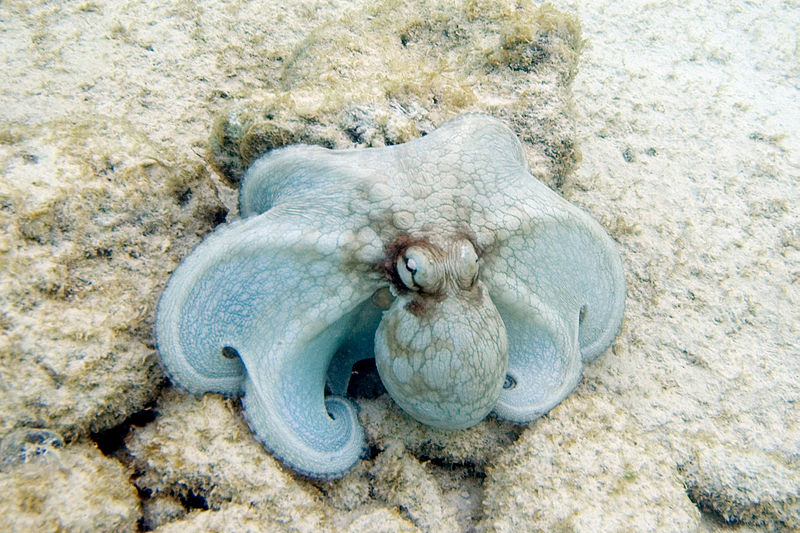Summary of Octopus Nursery Discovered 2 Miles Below Surface Might Also be Home of Potential New Species — Costa Rica:
Researchers off the coast of Costa Rica have discovered an active octopus nursery 2 miles below the surface and a prospective new species in the area. The octopuses were found on the Dorado Outcrop, a low-temperature hydrothermal vent, and it is believed to be the third known location where many octopuses congregate to lay their eggs. The researchers observed hundreds of octopuses and witnessed the hatching of their young. The discovery proves that deep-sea octopus species may seek out low-temperature hydrothermal vents to raise their eggs. It is unknown how long the deep-sea octopuses keep their eggs in this location.
Octopus Nursery Discovered 2 Miles Below Surface Might Also be Home of Potential New Species — Costa Rica
Off the coast of Costa Rica, researchers have made a groundbreaking discovery of an octopus nursery located a great 2 miles below the ocean’s surface. The nursery is home to a massive congregation of octopuses, and scientists also suspect that it may be the habitat of a previously unknown species. This discovery sheds new light on these fascinating creatures’ behavior and reproduction patterns.
During a three-week expedition on the Falkor research vessel of the Schmidt Ocean Institute, scientists were able to witness the hatching of octopus eggs and observe the active nursery at the Dorado Outcrop. This underwater mountain, about the size of a soccer field, is situated in the lower parts of the twilight zone and is 1.7 miles below the surface. It truly is a hidden wonder of the deep seas.
This discovery is remarkable because octopuses are typically solitary animals that prefer cooler waters. Finding such a large congregation of these creatures in one place is extremely rare. The initial sighting of the octopus nursery was made in 2013 during an expedition to investigate the geochemistry of the region. The discovery left researchers puzzled about why the octopuses would gather in such a hostile environment.
Upon further examination, scientists found 186 eggs and noticed the octopuses appeared anxious. However, they were unable to see any developing babies within the eggs. This led the research team to conclude that the Dorado Outcrop was not ideal for the animals to breed and raise their young. This finding was based on the notion that the environment was too sterile for successful reproduction.
Remarkably, the same location had been visited by a team of researchers, including geomicrobiologist Beth Orcutt, a decade ago. At that time, the octopuses were present but did not appear to be actively brooding. Returning to the site ten years later, Orcutt noticed a significant environmental change. The octopus parents and their offspring’s presence indicated a shift in these mysterious creatures’ behavior.
In addition to the octopus nursery at the Dorado Outcrop, researchers also discovered a smaller nursery on an unnamed seamount. This second nursery was located on a low-temperature hydrothermal vent, similar to the first site. These findings suggest that some deep-sea octopus species may actively seek out these vents as a favorable environment for raising their eggs. While the lower oxygen levels may challenge the octopuses’ respiratory systems, the warmer fluids emitted by the vents may provide optimal conditions for egg development.
Furthermore, scientists suspect that the octopus in these nurseries may be a new species within the small to medium-sized Muusoctopus genus. However, more research will be needed to confirm this hypothesis. The duration that these deep-sea octopuses keep their eggs at these nurseries is also unknown, leaving many unanswered questions for future exploration.
The discovery of these octopus nurseries and potentially new species off the coast of Costa Rica highlights the wonders of our oceans and the mysteries that still lie beneath the surface. It reminds us of the importance of conservation efforts and the need to protect these fragile ecosystems. By understanding and appreciating the intricate lives of these creatures, we can work towards preserving their habitats and ensuring a thriving future for marine life.
In conclusion, the octopus nursery found 2 miles below the surface in Costa Rica is a groundbreaking discovery that sheds light on these captivating creatures’ behavior and reproduction patterns. The presence of a massive congregation of octopuses and the potential existence of a new species adds to the intrigue and excitement surrounding this finding. It serves as a reminder of the beauty and diversity of our planet’s oceans and the need to protect these fragile ecosystems for future generations.


